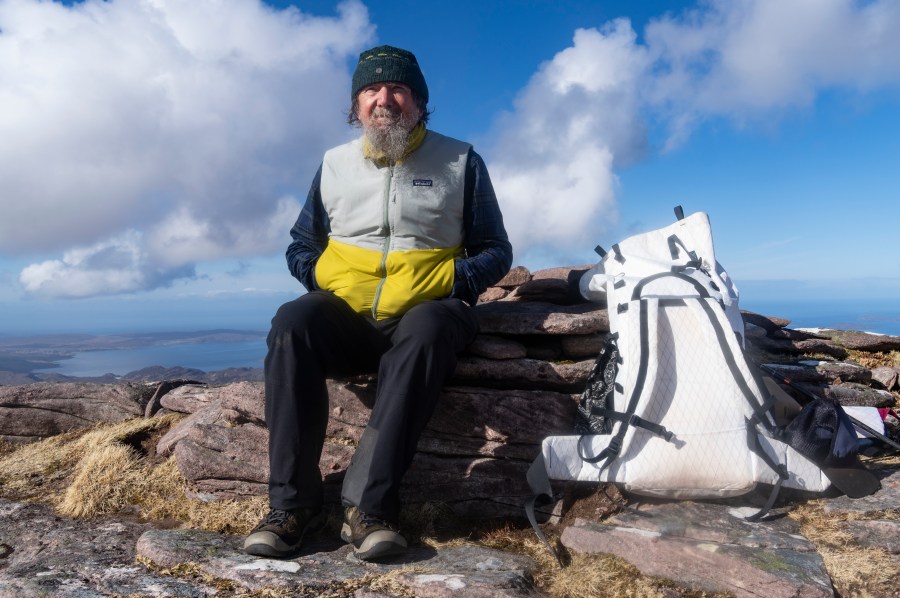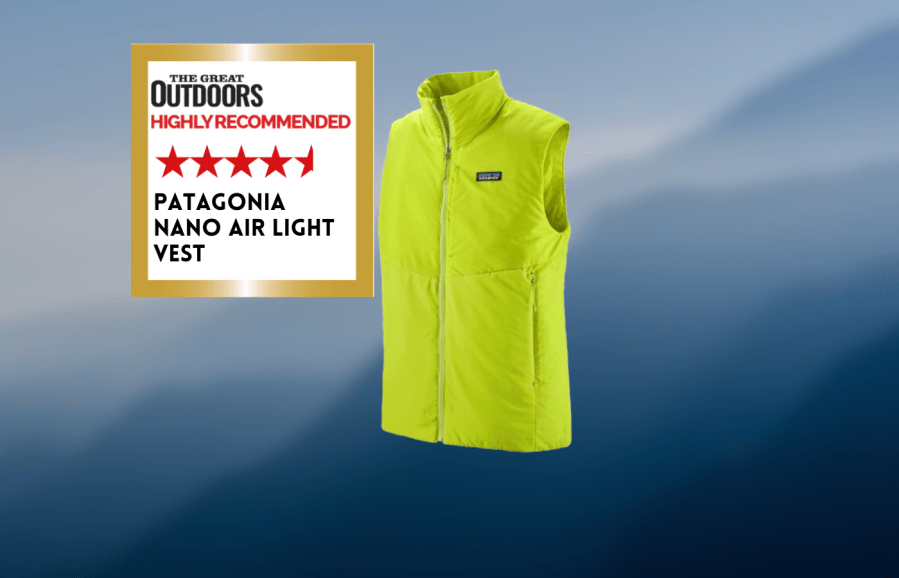A light vest is a useful item when you just need a touch of extra warmth and I often carry one as a spare layer though it rarely leaves the pack. However I’ve been wearing Patagonia’s Nano Air light regularly in recent months as it’s proved much more versatile than most vests. That’s because it’s made from air permeable fabrics that are very breathable whilst still providing protection from breezes.
Chris Townsend Highly Recommends
I like the Nano Air Light Vest very much. It is expensive for a vest though.- Lightweight
- Compact
- Breathable
- Warm
- Recycled materials
- Expensive
| Quick specs | |
|---|---|
| Price: £180 Weight: 225g (L) Fill: 40-gram FullRange polyester (93% recycled) Shell: Recycled polyester ripstop, PFC-free DWR Hem: Plain Pockets: 2 zipped handwarmer, 1 zipped chest Sizes: men: XS – XXL, women: XS-XXL Women’s/Men’s: yes https://eu.patagonia.com/gb |
The shell fabric on the Patagonia Nano Air Light is a ripstop polyester with a PFC-free DWR treatment. It’s soft with a matt finish and feels pleasant against the skin, unlike some shiny fabrics that can get sticky. The fill is Patagonia’s own Full Range insulation. This is a multi-denier synthetic fill made from several different types of polyester fibres that is said to give added stability against fibre migration. It’s contained in large panels in the vest and so far all the fill has stayed in place. The fibres are hydrophobic and repel moisture so the vest is warm when wet and dries fast. I certainly found this to be true the only time it has got quite damp.
Patagonia says the shell and the fill both have a mechanical stretch but this is actually very slight. I wouldn’t describe this as a stretch garment.
The vest has good environmental credentials as the shell is 100% recycled fabric and the fill 93% recycled. It’s made in a Fair Trade Certified factory in Vietnam too so the people who make it should be properly paid.

The design is functional with a high collar and three roomy pockets. The bottom of the handwarmers is cutoff by a hipbelt but they are still usable. The chest pocket is big enough for a map though it has to be inserted carefully as the zip isn’t that long. There’s no elastication at the hem or armholes, which I don’t think matters as the vest fits quite closely anyway and the soft fabric doesn’t stand away from the body. The front zip has a tiny cover at the chin for next-to-skin comfort. My beard would like a larger one!
The weight is quite low at 225 grams and the vest packs into a small bundle inside the chest pocket.
In use I’ve found the Nano Air Light very comfortable and very breathable. Worn over a base layer and a wool shirt and under a waterproof jacket it’s stayed dry and kept me warm on cool, windy days, including when walking uphill with a big pack. On other days I’ve pulled it out for extra warmth when stopping on a breezy summit then kept it on for the descent and it’s been excellent. It’s not fully windproof but if the wind is strong enough to chill me through it I’d want a jacket on anyway to protect my arms. Patagonia says it’s designed “to be worn for the entirety of your aerobic, start-stop mountain activities” and whilst they probably mean more energetic activities than hillwalking and backpacking it’s certainly good for those.
I like the Nano Air Light Vest very much. It is expensive for a vest though.








